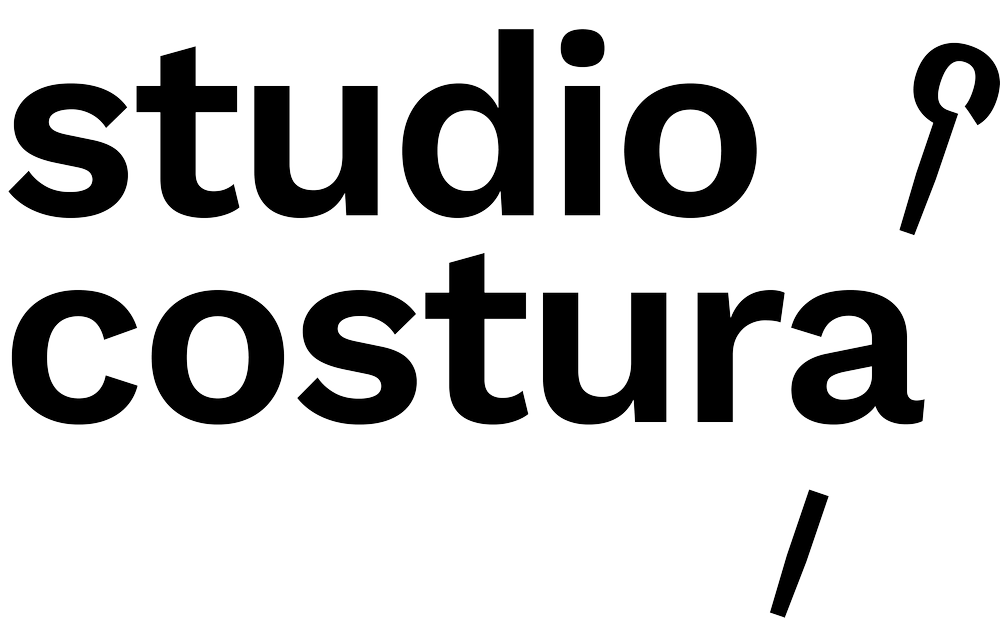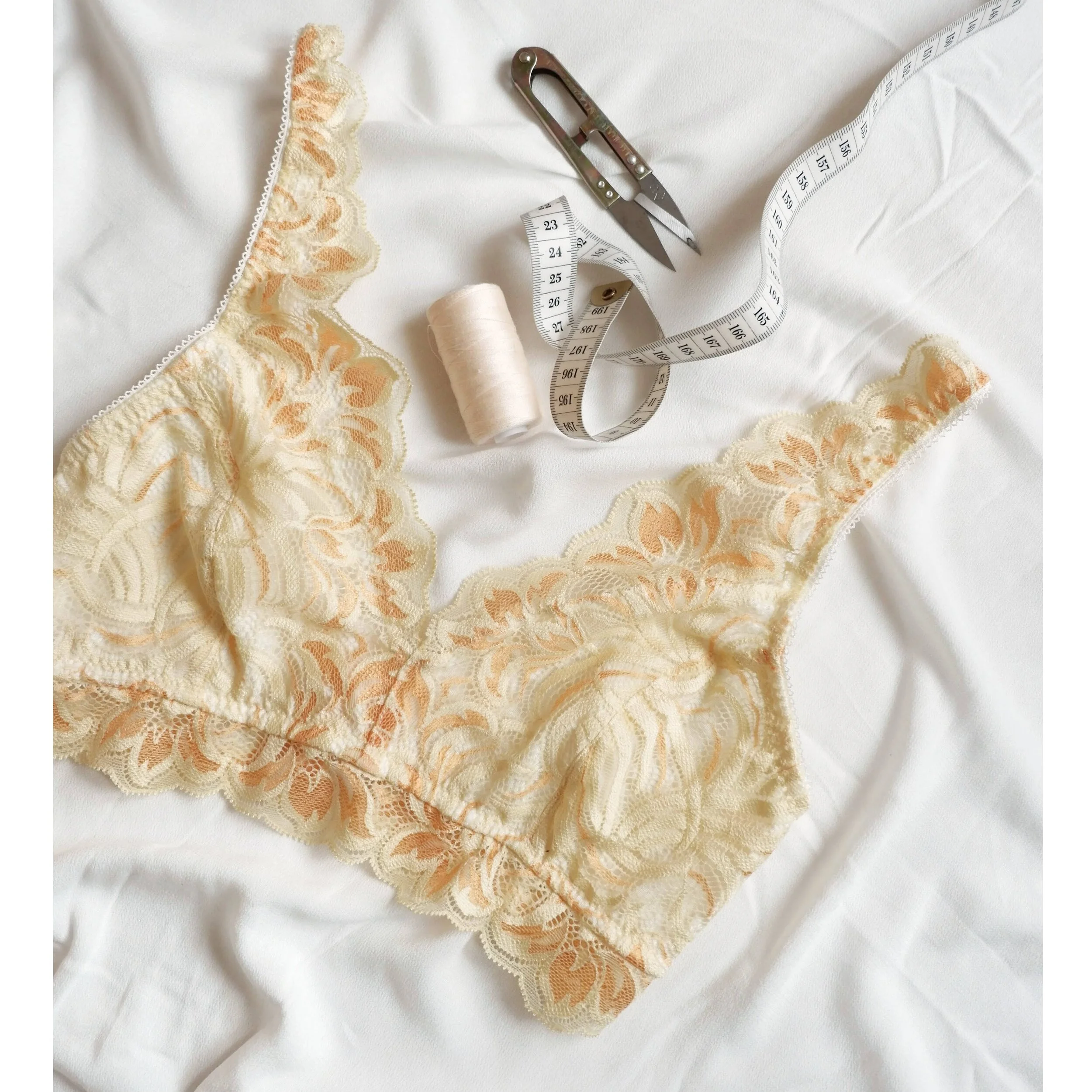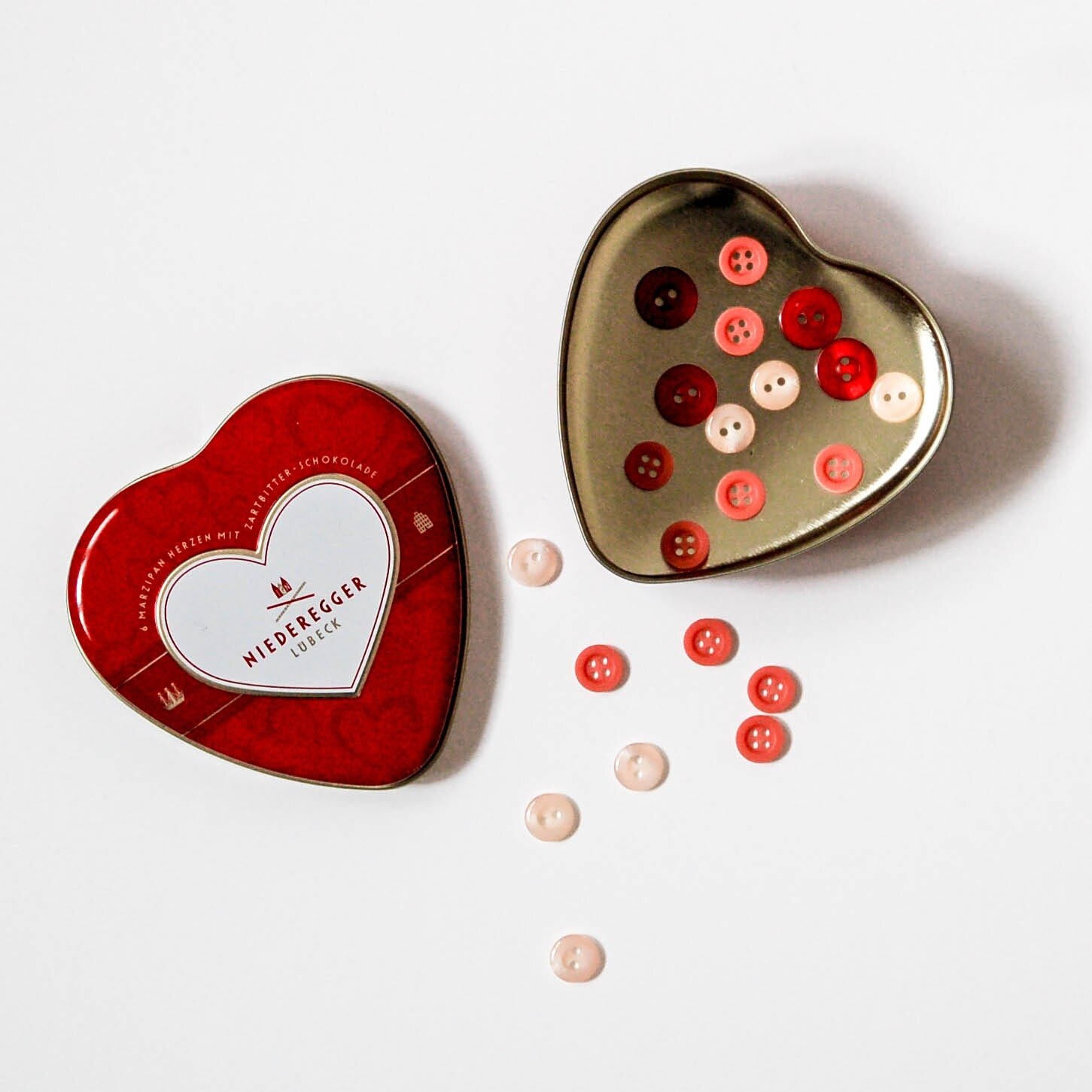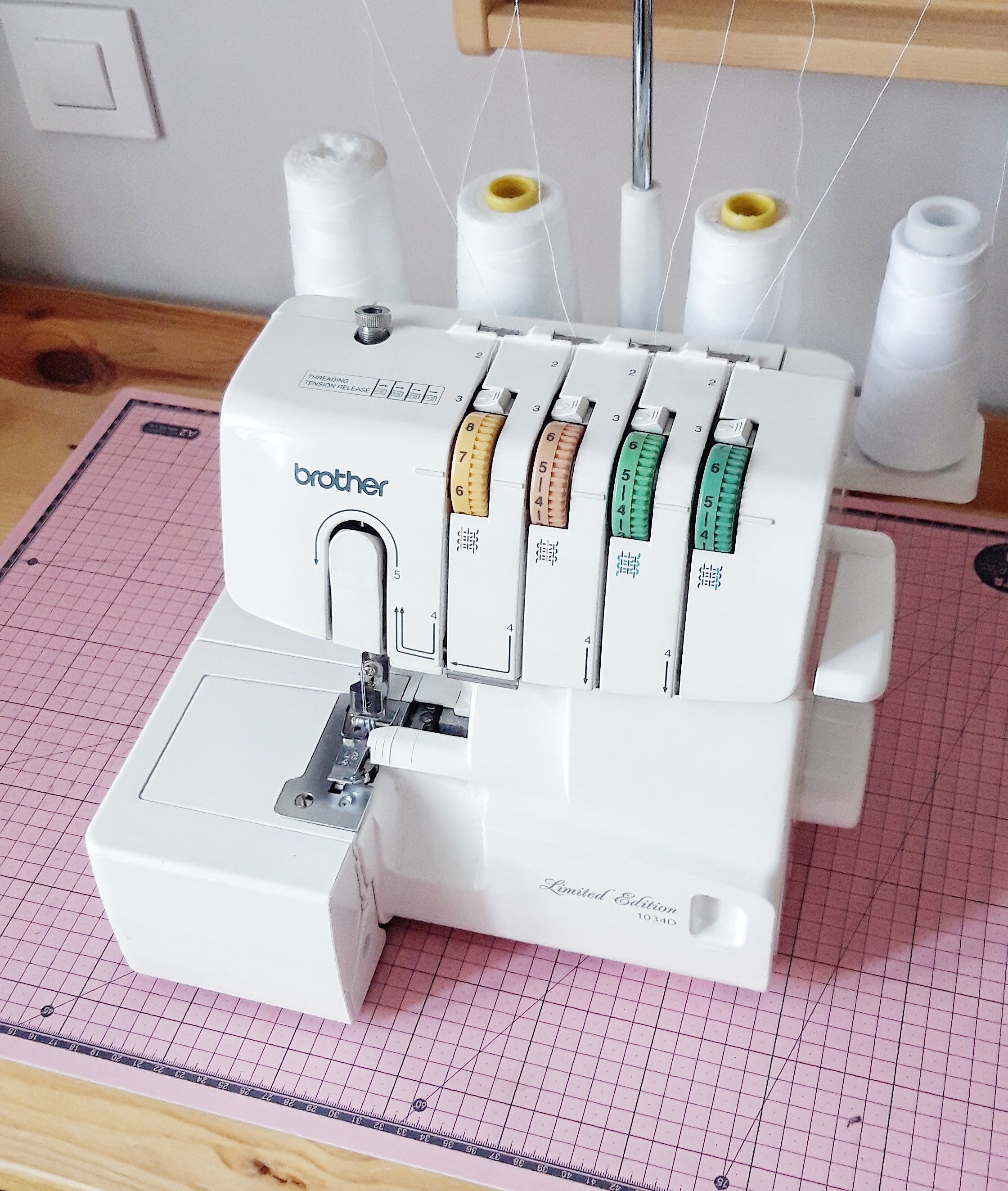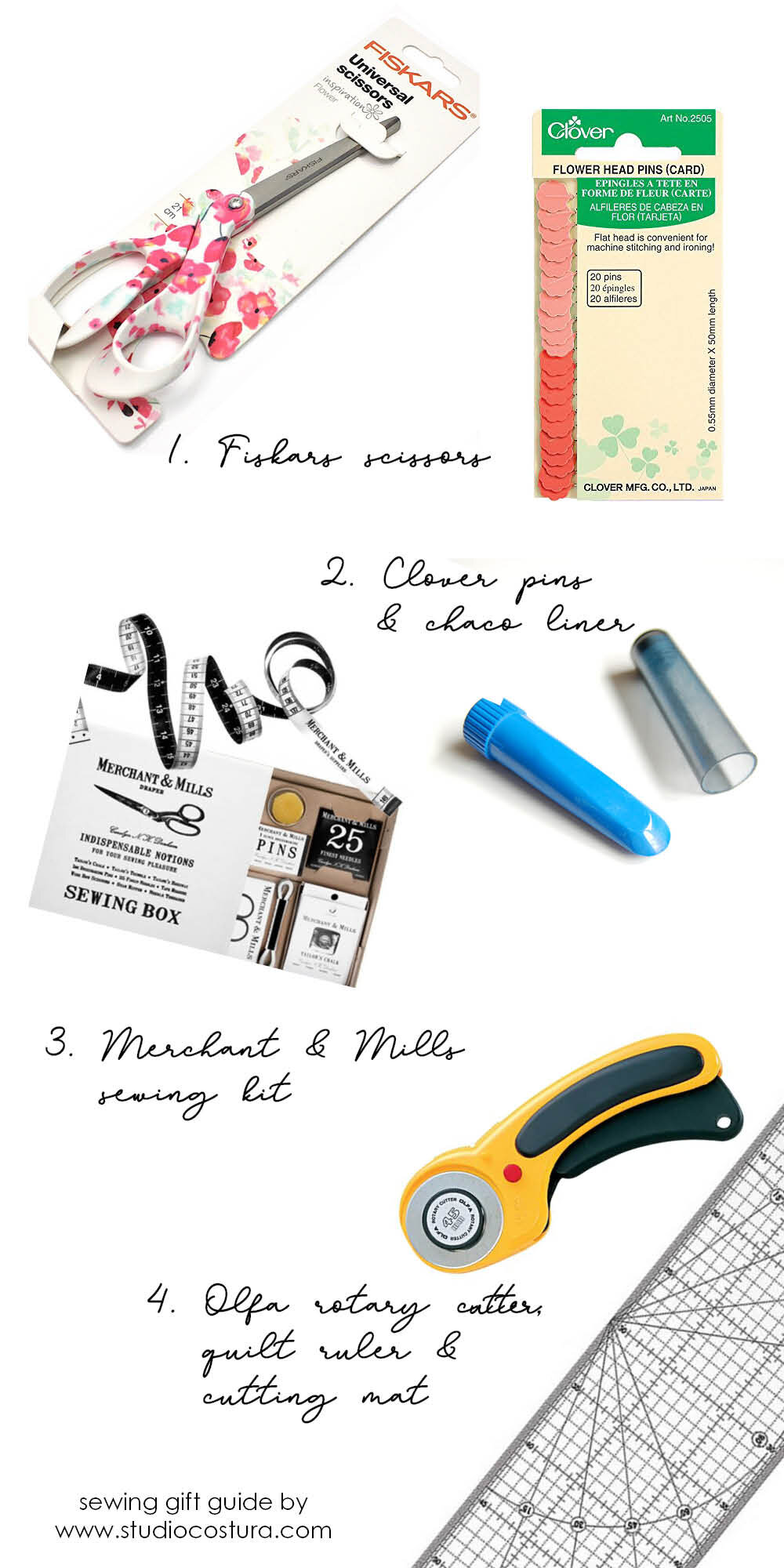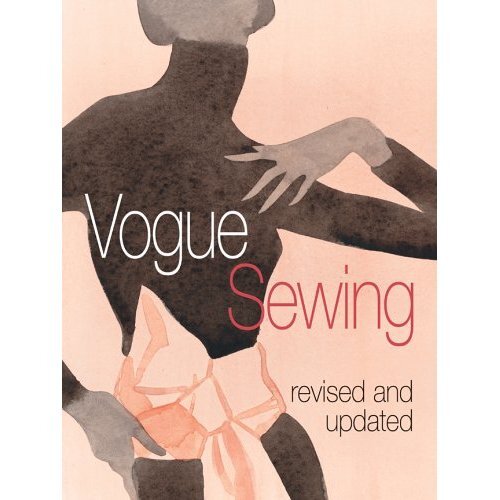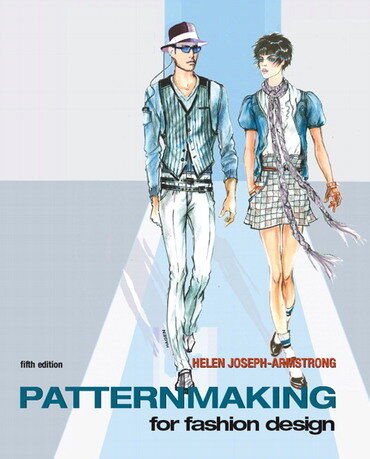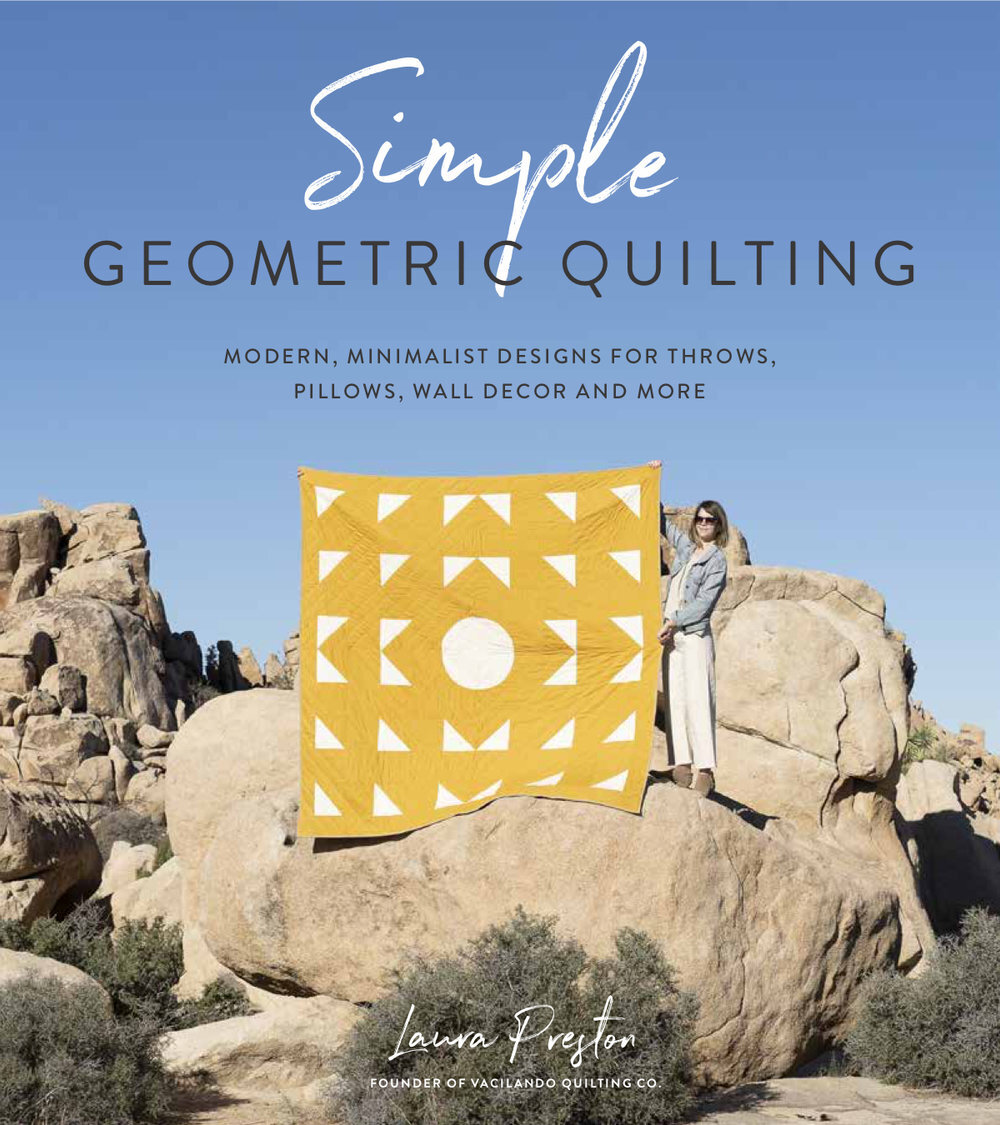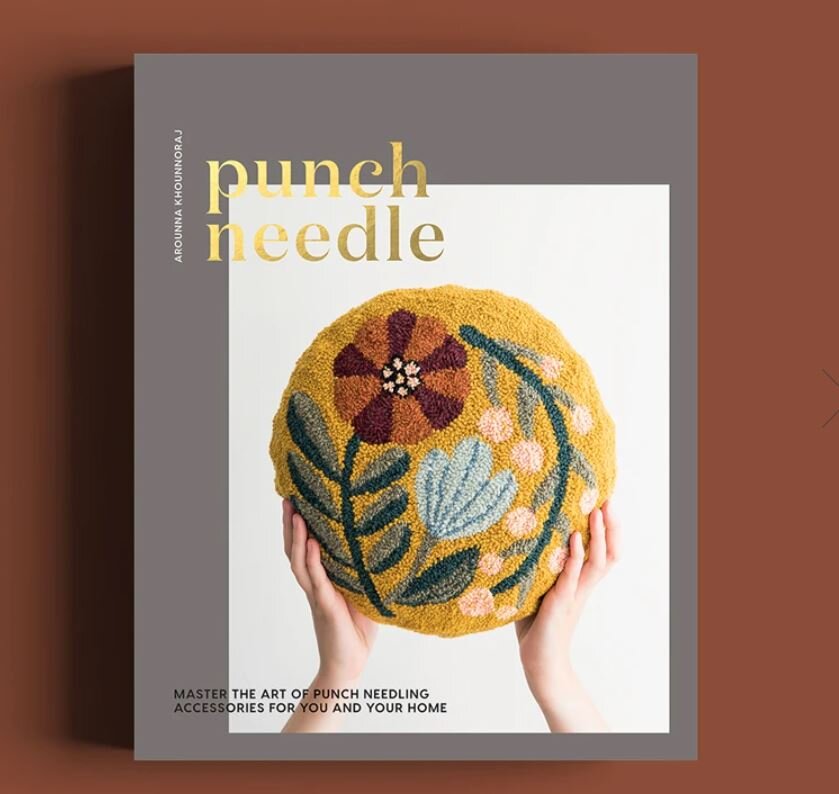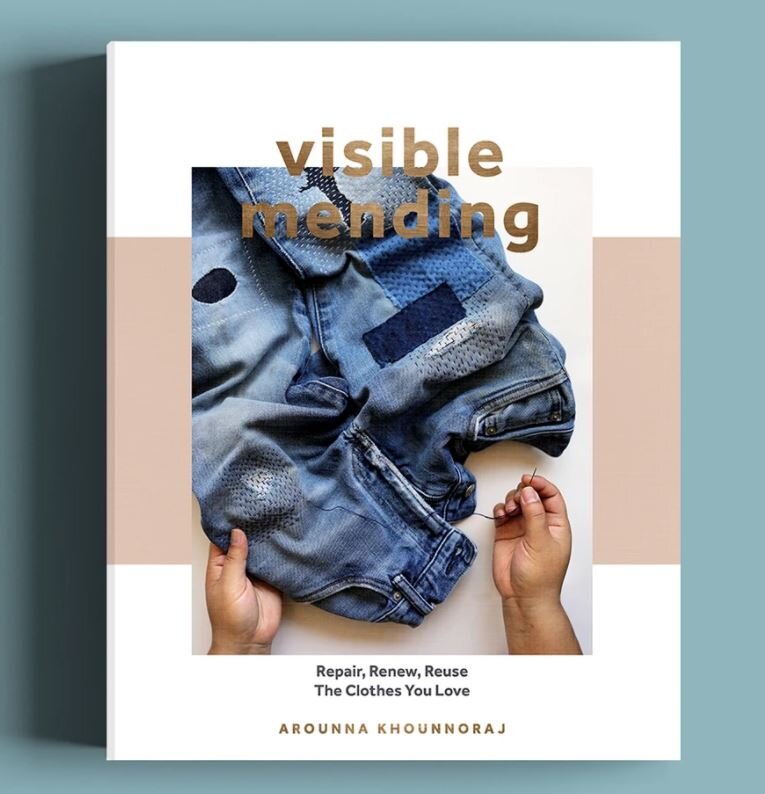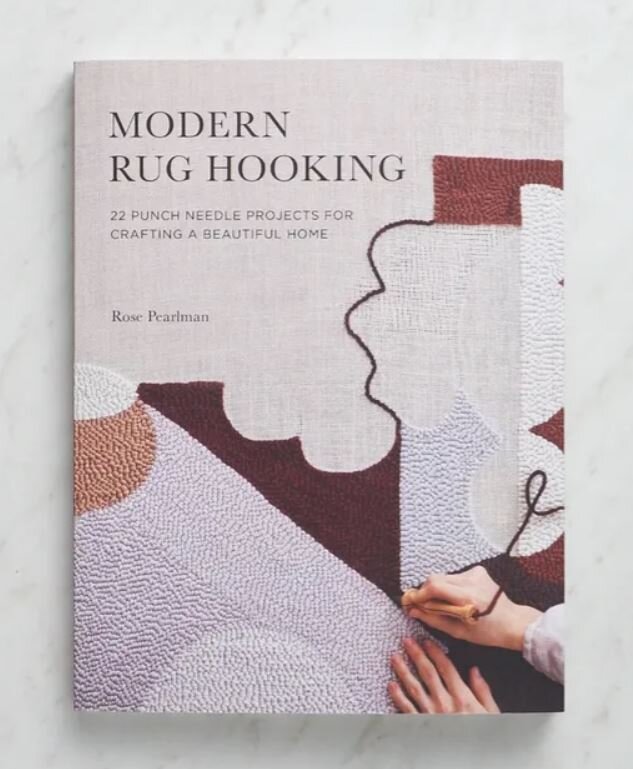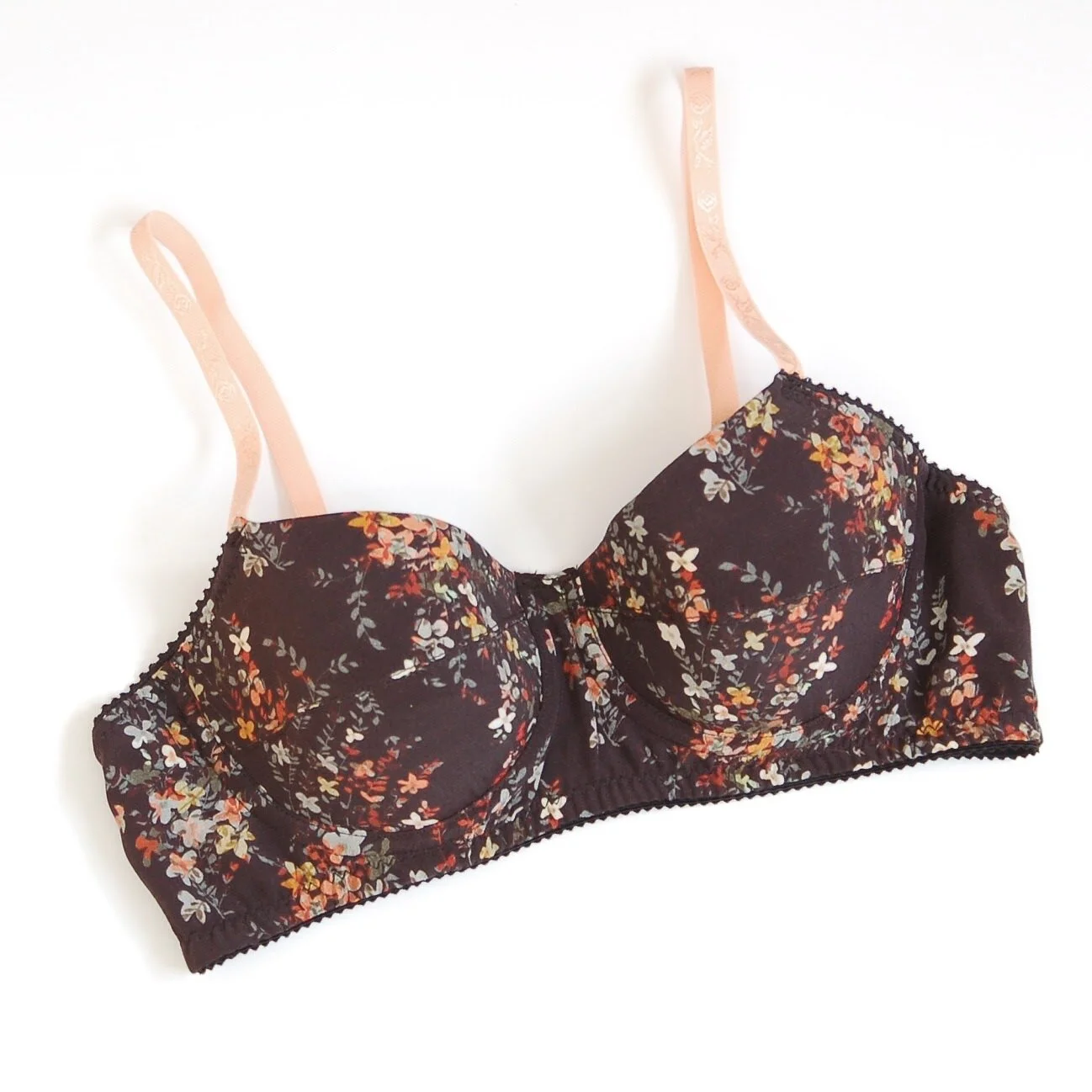It has been some time since I wrote a tutorial over here…and it has been ageeees since I showed you a hack for the Hanna bralette! The other day I posted this image at my shops IG account as an inspiration and many of you did say you’d like to see how to make this modification to add a lace edge to the band so here we go!
Read MoreFive years of Studio Costura
This blog, and the whole Studio Costura project turned five years old past Sunday, 14th of February. If you follow me on IG you might have read my little stories about “behind the scenes” of all these years. I also wanted to collect them together here as a special anniversary post + I’ve written also about my thoughts on all of that at the end of this post.
Read MoreChoosing an overlocker
Welcome back, 2021 let’s do it! As the pandemic is not enough we were surprised with a massive snow storm in Madrid last weekend and everything is still pretty much collapsed right now when I’m writing this post. You really need to keep your head up...and your hands occupied while waiting for some better times! So let’s go with some sewing related talk here.
Read More2020 in my sewing and knitting
So here we are, ending this surely “memorable” year of 2020. What an intense, unpredictable and for many people very tough year it has been. I know that everybody has had different experiences and life changes during this chaotic time, I hope that you are doing at least OK amidst all of what has been happening in the world.
Read MoreSoftshell anorak from Ottobre Design
Today I’m sharing with you my newest make - this softshell anorak! I’ve already written about several softshell jackets I’ve made (see this first one for my daughter here and the Serra jacket and another jacket I made for her here) so you probably already know that I like this fabric a lot.
If you are not familiar with this fabric I’ll tell you a bit about it. This fabric is ideal for lightweight fall/spring jackets as it’s wind and rain proof (it’s not entirely waterproof so you can’t really use it in pouring rain but I have used it without an umbrella with light rain and it worked well). The exterior layer is a technical fabric that makes the fabric wind and rain proof and the interior layer is a lightweight fleece and the combination is just perfect for casual outerwear. You’ve probably seen this fabric used a lot for activewear!
There are several places you can get softshell these days but I will mention the shop I ordered it this time, it’s called Active Fabrics. I already mentioned this online shop (based in Germany) in my boiled wool post as we also tried their wool which is great and very reasonably priced (Laura used their wool for this pretty Clare coat). I ordered my softshell from this shop too as they have several types and lots of solid colors to choose from. The one I chose is the Arctic Softshell but I also ordered swatches for other types of softshell they have available and all of them looked just fine. The flat rate shipping is a bit expensive as they send the orders with DHL but we did order many different fabrics among the students at the academy so it was well worth the money and they delivered to Spain really fast!
So now about my anorak. I knew I wanted to make myself another fall jacket in softshell but in a more “neutral” color. I’d say that the print I used for my Serra jacket wasn’t the craziest I’ve seen (and as it was me who picket it, I obviously liked it, hehe) and I’ve been wearing the jacket a lot...but you have probably already noticed my tendency to wear more neutral colors so I was left with an itch to have another more “combinable” jacket too.
I’ve actually made an anorak style jacket before (this Kelly anorak) which I liked a lot but as I used a quite random canvas fabric when I made it several years ago it started to have some pilling and I knew I had to make another one. I actually wanted initially to use the Kelly pattern but the yoke and two part sleeve aren’t such a good fit with this activewear fabric. Also, I knew I wanted the zipper to go up until the raised neckline of the hood for maximum warmth.
When I received the latest Ottobre Design women's issue (5/2020) this summer I knew that the anorak pattern was just perfect for me...and I also liked the dark green color as I already have some outerwear in this color and I find it super easy to mix with all my other neutral/boring color choices, haha (I chose the Olive color from the shop for my jacket). The pattern in the magazine is not directly made for softshell but it’s very easy to adapt as sewing with softshell is very comfortable: you don’t need to worry about any seam finishing (well, I did use some bias tape but more about that below) as the fabric doesn’t fray.
I of course made some changes...the first one being adjusting the pattern to have raglan seams instead of dropped shoulders. This modification is a bit complicated to explain here without diagrams but it’s not super hard to do for relaxed fit like in this anorak. But...if you’re like me and forget stuff, you can easily almost ruin your project, haha. I did modify the raglan seams a bit in a hurry (to cut the pieces at the academy so I could sew at home during the weekend with my industrial sewing machine) and forgot one crucial step which I found out about when I had already sewn together the body and the sleeves.
Long story short: I almost didn’t finish the project because I had some crazy wrinkles in the armhole area due to my poor patternmaking mistake but I somehow managed to correct this by cutting the sleeves off (yes, cutting, not ripping the seams, I was that devastated, haha) and recutting the armhole shape. I had to sacrifice about 5-7 cm of the sleeve and general length with this “hack” but it wasn’t that bad because I could just add cuffs for the sleeves and be OK with the body being a bit shorter (although my daughter made jokes about seeing my butt from the hem opening on the back piece…). Anyway….after being able to save the project everything else was quite easy, haha.
I didn’t use the original pockets as I wanted to have bigger welt pockets. Also, sewing welt pockets is way more exciting as you actually have to cut into your almost finished project (if you’re like me who’s basically winging it and marks/sews the pockets as the last thing, haha) so you can be scared about making a mistake you can’t really fix, hahaha. Anyway, I managed to make the pockets with quite a lot of success and the best part is that I used the soft fleece side of the fabric for the interior lining of the pockets so it’s super nice to put my hands in the pockets now! Also, you can check out the welt pocket tutorials (and other neat sewing techniques) on this resources page over at Ottobre Designs website (I already mentioned this page in one of my newsletters...if you want to get my best finds about nerdy sewing stuff in your inbox you can sign up here!).
The cuffs were a happy accident due to my sleeve wrinkle incident but I actually like them a lot this way and I don’t think I would have thought about doing this cuff detail otherwise. You can’t really see it but on the inside these cuffs also have a ribbed knit cuff...because you’ve got to keep this body warm, hehe. Rib knit cuffs are super comfortable and you can really add them to any sleeves, with or without cuffs!
As I mentioned before the fabric doesn’t fray but as usual when sewing with softshell fabrics I did open the seam allowances and topstitched through both layers on the right side of the fabric. I like how it looks and the fabric will lay nice and flat this way too. I did use bias tape to cover the body/hood seam as it gets kind of bulky and I like to cover it for a neater finish. I also used this Circa 2020 label from KTML to remember this very weird year!
I really like how this anorak came out and I’ve been wearing it a lot since I finished it! The fit is really good, I like the color a lot and these roomy soft and warm pockets make it so nice. The hood could be a bit smaller but it’s OK...I don’t know what’s up with my hood lately, haha, I always prefer bigger hoods but then they end up too big and they just fall on my eyes when I actually wear them. Oh well...at least it doesn’t rain so much in Madrid :)
So yes, I’d definitely suggest you try sewing something with softshell if you haven’t tried it out yet! I think the result is really professional and also comfortable + you can choose between many different styles. Thanks for reading and I’ll see you around here in two weeks when I’ll publish my annual project recap post. I’m really glad that this versatile piece is one of the makes of 2020 :)
I also wanted to add this photo of Alex, Laura and me from this Friday! We went to an exhibition at the San Antón market in Madrid organized by Instituto Iberoamericano de Finlandia. The exposition was about Finnish textile design and it’s open until 15th of December if you’re in Madrid :)
Sewing Gift Guide
Anyone thinking about the holidays already? I’m sure that all of us are wondering about how they will turn out this year, for sure it will be different...but let’s try to find ways to stay positive, it will get better! The season of giving gifts is around the corner and I’m sure there are many handmade gifts you’re going to make for others. But what about your own wish list? Many times your friends and family want to give you a gift related to sewing but it’s really complicated for them to know what you’d like to get. And that’s exactly why I’ve made a little gift guide including my favorite ideas! You could just pass on this post to the people who might need it ;).
As I know that there are people from all over the world who are reading this blog I’m not adding specific shop links (unless the product is available directly from a shop/brand!). You can just look up the product on Google and find a local/online store that fits your location. If possible, always try to spend your money in small businesses, they are the ones that need your support the most right now! As a small business owner myself I’m forever thankful for every customer who decides to shop my products :).
I actually have two other posts about gifts in the blog archives too, so you can see more ideas in this first post and this second post!
sewing tools for every maker
First up, some of the essentials I truly love! All of these ideas work well for any person who loves sewing regardless of their experience.
Fiskars scissors. This Finnish brand makes really nice quality scissors that you should definitely have in your sewing kit, they are so good! The universal size works for everything and there are many options design wise (I just saw these Moomin designs, and they are the cutest!). Scissor sharpener by Fiskars is a really cool tool too, I use it a lot!
Clover pins and chaco liner. The flower head pins by Clover are made for patchwork but you can of course use them for any sewing project. They are super sharp and look cute too! The chalk roller is my personal favorite marking tool. This fabric marker is refillable and works super well both on woven and knit fabrics.
Merchant & Mills notions. This brand has the prettiest sewing notions and a large variety you can choose from. The packaging is very nice too and they make a really pretty present
Olfa rotary cutters, quilt rulers and cutting mats. Olfa is my go to brand for all things related to rotary cutting. I love my ergonomic 45 mm blade rotary cutter and I use it for everything. The 15x60 cm quilting ruler is super useful not just for quilting but for measuring anything. I’ve used many different rulers but this one is by far the best one yet! And to cut with a rotary cutter you also need a cutting mat. Olfa mats are strong but they are not too thick and they heal super well so they will look new even after a lot of use. I use the one that measures 90x60 cm, this size works just fine but if you have more space you can of course get a bigger one!
Sewing lingerie
For lingerie lovers there’s this little list of things to give as a gift. Either you’ve never tried out sewing your own lingerie or if you’re already in the handmade lingerie making game, these ideas work really well!
Bramaking kits and patterns from Studio Costura Shop. I’m going to be a bit selfish now and list my shop first, haha, but I really think that a kit would be such a nice present. I’ve actually just made specific gift cards that you can get which means that the person who receives the gift card can choose their favorite kit from the shop and it will be shipped directly to their home. Choose between kits to make bras, bralettes and panties! Giving a sewing pattern as a gift is also a great idea and again you have an option to buy a gift card as a present.
Duck bill scissors are a nice tool for lingerie makers to have in their sewing kit. They work really well for trimming fabric underneath the elastic and they look super cute!
Gutermann Bulky Lock thread for the serger. This fluffy thread makes your serger seams really soft and you can use it for all of your projects and especially for lingerie. You need two cones for the anchors of the serger.
Some other nice things to have…
Labels by Kylie and the Machine have the coolest designs and the quality is really good, they are super soft! It’s the perfect detail for your handmade projects! See the list of shops that sell the labels here (we also have them in the academy if you’re in Madrid!).
Sewing pins by Crafty Pinup are so cute, let everyone know that you’re a proud maker :)
Wool batting is definitely something luxurious for people who like warmth! It can be used both for quilts and for jackets. (You can get it in Seoane Textil if you’re in Spain).
Prym snap fasteners give a cool touch to your handmade projects. You can get these in many different styles for a variety of projects.
Books
Books are always a good idea! Here are some of my favorites:
Vogue Sewing: a very detailed sewing reference book that suits well into any sewing library.
Patternmaking for Fashion Design: an in-depth reference book about drafting patterns, perfect for someone who wants to take a step forward (you can read my review of this book in this post).
Simple Geometric Quilting: a beautiful modern quilting book that is full of beautiful projects, perfect for someone who wants to learn the basics of quilting.
Punch Needle and Visible Mending: both of these books by talented Bookhou look really nice and her designs as always are super beautiful!
Modern Rug Hooking: Rose Pearlman is another artist whose designs are very beautiful and this book looks just amazing.
Classes
An opportunity to learn new skills is probably the best gift possible and there are many options to choose from. If you have a local sewing shop close by you could buy a course as a gift (if you’re here in Madrid we have gift cards available at the academy for all the sewing classes and lingerie courses). And even if you don’t have a local place to go to classes you can always choose an online class and learn wherever and whenever you want. Skillshare for example has a variety of courses in a large variety of topics.
I hope you’ve found this list inspiring...not only for these holidays but also for any occasion when you need a gift for someone who sews or for yourself :)
Lingerie sewing guide III: bras // Guía de lencería III: sujetadores
Sometimes things take more time than anticipated...this post comes two years (!!!) after I wrote the first two lingerie guide posts about panties and bralettes. To be honest I kind of forgot about it but on the positive side I have more information to share now than back then. So I guess that’s a good thing, right?
As a little recap, these posts are full of resources you can look up when you’re starting/moving on on your bramaking journey. If it’s your first time around here/first time sewing lingerie, I’d really recommend you to start the post about sewing panties. Then go on and check out the post about bralettes...and then come back here as I’m going to share many useful resources that can help you a lot.
First of all, this post will be about bras, mainly about underwire bras. I’m going to share what I’ve learned from my own experience and more importantly, I’ll be sharing great online resources so you can read more. Bramaking at home as you could guess is quite a niche, there are not so many people actually doing it (yet). But the good news is that there are actually many seamstresses who are trying it out and there are also many great resources. Since I opened up my Etsy shop and started to sell bramaking supplies I’ve been closer to this niche and I can tell you that I’ve seen a huge growth of popularity in the past years. This is great as there are now so many more online resources for you to learn from. I’d like to thank everyone who’s putting together blog posts, filming videos, writing books and posting their makes on Instagram so all of us can learn from their process!
Sewing patterns
I’d say that when you start out you should first pick a pattern and after that you'll know which supplies you need exactly. Luckily there are many good bra patterns available, most of them in PDF format so you can use them regardless of where you live. I’d say it really depends on your personal preference when you choose a pattern, check out different designs and think about what kind of RTW bras you like to wear. There is of course the size factor that can narrow down your choice but many brands have been making their patterns in wider size ranges lately.
When I made my first underwired bra I actually started out with a bikini, you can see the Sophie bikini post here. Sewing underwired bikinis and underwired bras is quite similar construction wise. I then made a couple of Boylston bras by Orange Lingerie and this is where my bramaking journey began, hehe. I had absolutely no idea back then when I started and I learned everything through trial and error + online courses and books. So please bare with me when you read those first posts, haha, although I guess they could be interesting from the perspective of a total beginner!
Here’s a list of brands that sell underwire bra patterns (if you like a design just check out the pattern hashtag on Instagram and you’ll see many versions so you can make up your mind):
Of course there are many other brands that produce patterns for underwire bras (tell me in the comments if you want to share your favorites!) but these are the ones I’ve used personally or I know that other people have used them successfully. I’d like to give a special mention to the Black Beauty bra by Emerald Erin as it has been very popular among seamstresses from all over the world.
I couldn’t point out just one pattern that I’d recommend for your first project. Most of the underwire patterns are based on the same principles so as long as you have good instructions you should be good to go.
I use the Simplicty 8229 underwire bra pattern in my bra classes at the academy for various reasons. First, it’s one of the few bra patterns that comes in paper format and I need a physical pattern to use it in class so the students can trace their size and they will later on take the pattern home with them. Second, this pattern is entirely lined with powermesh which makes it easier to get the best possible fit on their first bra (the cups are stretchy so they will probably fit better even when the sizing is not 100% accurate). Learning how to construct/sew a bra is not very complicated for someone with an intermediate sewing level, but getting the right fit does usually take more than just the first try and in class we don’t have time for additional fitting.
Supplies
The supplies you need for your bra depend on the pattern you choose so you should carefully read your pattern instructions before buying supplies. As I told you in the bralette post, it’s probably easier if you first get a bramaking kit to see what the supplies should look like and then you can see if it’s possible to source the different supplies on their own.
I have bramaking kits available at my shop and here’s a list of shops I like that offer kits and supplies per meter:
Tailor Made Shop (US)
Emerald Erin (Canada)
BWear (Sweden)
Nellie Joans (New Zealand)
You can also check out the lists of shops curated by Cloth Habit and Orange Lingerie.
To understand which supplies you need it’s better to divide in parts. Basically there are the cups, the cradle (front band) and the band. The cups and the cradle can be designed for rigid or stretchy fabrics, the back band has to be stretchy.
Lace
See if you need rigid or stretch lace for your pattern, the pattern is drafted either for stretch or rigid fabrics and to get the right fit you need to respect that. You can’t really make a non stretchy fabric into a stretchy one (if you have really small cups I guess you could maybe get away with it, haha) but you can underline stretchy fabrics with rigid lining and this way you can use stretch lace for rigid cups. It can be a bit tricky for the first time but it’s definitely possible.
Fabric
If you are making a bra that doesn’t use lace you can try out different types of fabrics. Duoplex is a common speciality bramaking fabric choice as it’s soft but not stretchy, lingerie satin is also a good option. I’ve also used different knits and even wovens, if you’re working with a pattern that has rigid cups you can actually use many different fabrics for the whole bra (apart from the back band that should be stretchy).
Tailor Made Shop offers pretty lingerie satin and Emerald Erin has duoplex in her shop.
Lining
You can of course not line your bra but most of the patterns are made with lining and in my opinion it makes it look and feel better if you line your bra. Again it depends on your pattern requirements but usually the cups and the cradle (the front part of the band) are lined with stable lining like non stretch tricot, sheer lining or bra tulle. The back band has to be stretchy in order for you to have a comfortable undergarment. The best option is to use power mesh for that but you can also use a double layer of stretch mesh. Choosing more or less supportive supplies also depends on your needs, bigger cups usually need stronger fabrics too.
I have sheer lining and powermesh available by meter at my shop!
Read the post about bra lining options by Emerald Erin here, she explains the difference between the rigid lining fabrics.
Foam
You can use cut and sew foam for patterns that are designed for this material or you can also hack most of the patterns in order to use it. Cut and sew foam is cut as your cup pieces and once you sew the seams you’ll have a nice 3D cup ready to use.
Elastics and the rest of the supplies
The elastics and other small supplies used in underwire bras are usually the same ones you would use for a bralette (see the bralette post). I usually prefer using a wider (12-16 mm wide) lingerie elastic for the bra band to give more support. You should also consider using wider straps for bigger cup sizes, this way you’ll have a more comfortable bra.
You also need underwire channeling tape for your bra, you’ll insert the underwires inside this tube like tape once your bra is finished.
Read my bramaking elastics guide here. Also it’s really useful to watch the highlighted stories at my shops IG feed, I highlighted there which supplies are in my kits and where you should sew the different elastics on your bra.
Wires
Your pattern will tell you which wire type you need and you should also see which size. Not everyone obviously finds the standard wire size they “should be in” comfortable, you can try out different wire sizes and styles to find what works out for you.
Read this post by Emerald Erin about underwires, she explains really well the differences between wire shapes.
Sizing
As always, whatever you do, don’t use your best supplies to sew up a pattern you haven't used before, always make a muslin with similar materials you’d be using for your final project (use rigid fabric and stretchy fabric as stated in the pattern instructions!). To know your size you can refer to this post in the Mara bralette sewalong (Mara bralette has bra sizing so it works the same way).
Once you’ve made a muslin you can start checking the fit. The only downside with bramaking in my opinion is that you won’t see the exact fit until you finish the actual bra and wear it. That’s why getting to your ideal size/pattern can be a journey...but don’t give up, it’s worth it!
To be able to get to the point of getting the perfect fit on your own at home I’d recommend you to read blog posts, follow bramakers on Instagram, take an online course or get some bramaking books if you’re into it (or do all of it if you’re really into it, haha). And practice of course!!! There’s nothing better than practice to get better at something, right?!
References
As I said in the beginning of this post, luckily we have now way more information about bramaking online than before. There are many good resources and I’ll share here a list of things I’ve tried myself and what has been recommended to me :)
Online courses
Beverly Johnson (the founder of Bramakers Supply) has good online courses about sewing underwire bras at Craftsy, this is where I first learned how to sew lingerie.
Another course that has been recommended to me is the bra pattern drafting course by Porcelynne. I have her book about drafting and grading panties which I like and I’ve been told that the course is really good.
Great Bra Sewing Bee is an online event that took place for the first time this summer and I was sponsoring it. The event included many online courses and a lot of resources + a very active FB group for bramakers. The event is now over but you can still access all the content if you register for an extended access.
Books
Bra Makers Manual I and II have been the books where I learned all the bra drafting and scaling from. Both are full of useful information about everything related to drafting and sewing bras. You can get the books in paper or CD format from their shop in Canada or from BWear in Sweden.
Other useful books:
Pattern Cutting for Lingerie, Beachwear and Leisurewear
Blogs
Studio Costura: I guess you’re already here but in case it’s the first time you visit my page, go to the Learn how to sew lingerie section to see all the posts.
Tailor Made blog: Ying publishes her roundups there so you can stay up to date with everything new in the bramaking community.
Emerald Erin: just go through her archives, there are so many great posts about all things bramaking.
Cloth Habit: not an active blog anymore but there are many interesting posts to look up.
Orange Lingerie: tutorials, inspiration, posts about techniques.
Instagram and YouTube
@emeralderinsews: her #braaweekchallenge is the best, could watch her sew for hours!
@tailormadeshop: the creator of #braugust, a community event that connects bramakers all over the world
@always.sew.hungry: I really like her makes and she’s sharing great tips about sewing bras
@the _ twisted_poppy: she makes tons of lingerie and shares all the details about her modifications
Liz Sews on YouTube: her channel has a lot of great videos about bramaking
Also, if you’re in Madrid and want to come to learn how to sew your own lingerie you know where to find me, just check the courses calendar at Historias Hiladas Madrid!
I hope you found this guide useful, I’m sure there’s no information when you click through all those links! I’ll save that post in the Learn to Sew Lingerie section of this page, this is where you can find all the guides, sewalongs and tutorials. If you want to share your favorite resources that are not included in this post just leave a comment here or send me an email, I’d love to hear from you.
Aaaand to wrap this post up I’m also try to encourage you to try out sewing your own lingerie so here goes a GIVEAWAY: I’ll be giving away one bra + panties kit from my shop!
To enter the giveaway all you have to do is comment on this post and tell me what would you sew with the kit? Would you like to start out with panties as a first project? Are you into bralettes or already sewing underwired bras? Any patterns you’d like to try out?
The giveaway will be open until next Sunday, 15th of November and I will announce the winner here on the blog. I’ll choose the winner randomly from the comments and then I’ll contact the winner to ask for her address to send the package. The giveaway is open worldwide :)
Thanks for reading and good luck!!!
Edited on 16th of November:
The winner is Vikki Smith! Thank you everyone for participating and leaving your comments :)
Two makes with boiled wool
Autumn is definitively here and I wanted to share two projects I made with boiled wool, a fabric that is just perfect for this season. The one I used this time is a blend of wool and viscose and it’s lighter weight than the regular 100% boiled wool and it also has a really nice drape. It can be lined and worn as a jacket or on it’s own too (you’ll see my second project with the same fabric unlined below). I already made two coats with “regular” 100% boiled wool, that fabric is great for winter garments, it’s very nice to work with, presses amazingly well and it gives you all the warmth. I used it for this Burda coat and the black Berlin jacket below.
I don’t know about a specific shop where you can find a wool blend like I used but you can get 100% boiled wool in different places. We just received at the academy different wools we ordered at this online shop (the shop is in Germany, you can see the site for UK customers in English here) and the quality is really nice for the very reasonable pricing they offer (we got different wool coatings and boiled wool and everything was good quality and the shipping only took a couple of days to Spain). If you’re thinking about making a coat this winter I’d recommend you to buy wool coatings as they are so much easier to work with than cheap polyester coatings. You can of course first make a toile in a similar more affordable fabric but I’d really encourage you to try wool, you’ll be thankful later!
Now before talking about these two makes I have to start with previous makes with the same pattern, the Berlin jacket by Tessuti Patterns (I’m also including them here as I wasn’t really active posting my own makes over here at the blog during last year so they don’t appear in a separate post). I’ve used this pattern a couple of times already and I really like the simple shape. First I made this black boiled wool coat without lining like suggested in the pattern. The pattern actually is made specifically for boiled wool as this fabric can be left with raw edges and there’s no fraying involved. So it’s a very easy project really.
The only change I made was to draw an overlap for the front piece as I wanted to use snaps to close the coat (I know that when I’m already wearing a wool coat it must be cold enough to not walk around with the coat left open in the front, haha). After wearing it a couple of times over my wool sweaters I noticed that the friction between the two layers wasn’t really good for my wool sweaters and I knew I had to line the coat. So I unpicked the whole thing (the construction on the Berlin coat is a bit different and I wanted to have normal seams not the overlapped seams) and lined the coat so I could wear it comfortably (you can see more photos here).
This summer I discovered that the quick toile I had made for the black coat actually looked cute (I used a random not stretchy cotton knit), the peach color looked like something I could wear in the summer. So I cut the jacket shorter and finished it to wear in Estonia where the summers are not so hot like here in Madrid. I really really like how that one came together, it’s the perfect layering piece! Inspired by that make I actually made the boiled wool jacket featured in this post :)
So after liking my short Berlin jacket so much I thought I should also make a more autumn appropriate version in something like a boiled wool. I had also seen so many gorgeous Wiksten haori makes on Instagram (check out the #wikstenhaori hashtag for some serious jacket inspiration!) and as the pattern is actually very similar I thought I would just hack my Berlin pattern a bit. The main difference is that the Wiksten has a separate collar band and the Berlin has the band incorporated to the front pieces so what I did was to remove the band width from the front pattern and use a straight collar piece instead. I made mine narrower than the Wiksten and I didn’t fold it under. Again I lined the jacket for more warmth and comfort.
I really like the result and I’ve been wearing it a lot this season! Remember that I wrote before that when I decided to make the black coat I knew I had to close it in order to keep warm...well for some reason I didn’t really think about it when sewing up this one, haha. But it became obvious I had to do something as using a blanket scarf to cover myself wasn’t really going to work in the long run. Buttons wasn’t an option I was thinking about...but I did get some pretty decorative safety pins, big enough to close the jacket comfortably and also to stay hidden under the scarf, haha. But then it occurred to me that I could maybe make a belt with the same fabric to resolve this problem.
And the belt was a very good idea actually! I’m now wearing it tied up and I think it looks really nice. It does not really have the same oversized jacket vibe but I’m liking it very much! I also added little loops on the sides so the belt stays in place.
My second make is sewn with the same fabric. You might ask why I’d get so much of it to make two garments...well, there actually is an explanation, not a very logical one, but what can I say, haha. So I got this fabric for the first time last year in Estonia and took it with me to Madrid to make something with it but I didn’t use it yet. This summer in Estonia I got the idea for the jacket, went to look for a fabric and the one I liked the most was...the same one, haha. I knew I already had it back in Madrid….then again I also knew that a basic beige like this will always be used at some point! So I got the same fabric again and made the jacket in September.
When I later saw the 5/2020 edition of Ottobre Design I knew I wanted to try out the wool jumper on the cover...annnnd as I had the same fabric that would be just great for this style in Madrid, I could now use it up! So I guess I don't have a fabric collecting problem after all, haha.
So, about this wool jumper...I guess I can call it a jumper? I saw the cover photo of the magazine and thought immediately that it would be a great layering piece for the winter. It could be something I could use over a long sleeve knit t-shirt when I’m at work and this way I could have a little variety from wearing sweaters every day too (but I’d still have the warmth I need so it would be a win-win situation!). You could of course wear it also outdoors when it’s not very cold.
I actually don’t have anything like this in my wardrobe so I was a bit hesitant about this really fitting my (very basic) style. But not so hesitant to NOT cut it out from the wool without a previous toile, haha. Luckily I really like the result!!!
From the cover photo I could tell that the high neck was really exaggerated and that it might be too much for me but I decided to try it out anyway. And as I suspected, it was really wide! The good thing was that it was easily fixable. I did lower the neck quite a bit and I also brought the shoulders in quite a bit to get a look I wanted. The rest was really easy as I then just pressed all the hems and hand stitched them under so the seams won’t be visible after all. In that sense boiled wool and similar fabrics are really great as it’s easy to hand sew them in a quite invisible way (I’m not a big fan of hand stitching actually, haha).
I paired it with a high neck long sleeve rib knit t-shirt I made recently too and the combination is perfect!
I already made a similar white t-shirt that I talked about on IG with a pattern from Ottobre Design 7/2017 so it was easy to repeat with the same pattern (I’m planning to make more!!!).
The thing is that I always find the high necks that are sold in the stores super tight on my neck! I like how they look but I could never get myself any as they feel so uncomfortable. So what I did here is that I widened the neck piece quite a bit (I measured my neck roughly + added some more “breathing” room) and just used the new neck piece and the result is great, I feel good wearing it, haha. I didn’t make the neckline on the front and back bigger, as I was using a stretchy rib knit I just stretched the two layers enough to equally divide both circumferences.
To end this post I wanted to also share this beautiful Cumulus blouse (pattern by Petite Knit) I made in September (also up on my Raverly page). I used a delicate mix of silk, alpaca and mohair and the result is amazing. I wasn’t sure if I’d like a V-neck and I love it!!! It’s by far the most delicate (and expensive) thing I’ve knit and I’m hoping to wear it a lot this winter!
I hope you liked this post and maybe got inspired to sew yourself something fall/winter appropriate too. The last edition of Ottobre Design from where I got the jumper pattern has many great patterns if you’re looking for new projects. I also made a pretty coat from there too but I’ll save the details about that one for a next blog post :)
